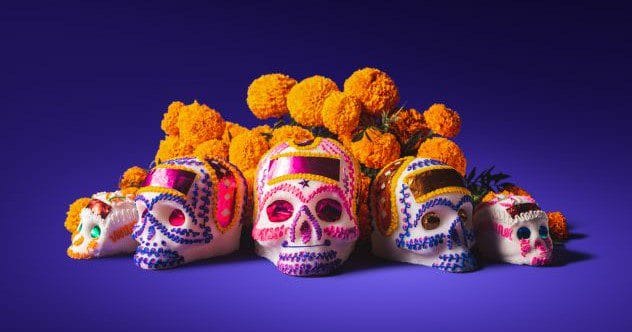Halloween is just around the corner! Skeletons are hung, and jack-o-lanterns grin from windows. While some embrace the spooky fun, others prefer to skip it. But for kids, it’s all about the candy and costumes. Did you know many countries have their own versions of trick-or-treating? Some are similar, and some are wildly different. Let’s explore some unique trick-or-treat-like traditions from around the world!
10. Rummelpott
In Northern Germany and Denmark, they celebrate the New Year with “Rummelpott,” which translates to “Noisy Pot.” Instead of partying, kids dress up in costumes and masks in late December. They believe disguises will keep the past year’s spirits from following them into the new year. It’s like trying to shake off last year’s bad decisions!
Children go door-to-door singing folk songs and clanging their Rummelpott, traditionally made from a pig’s bladder. They ask for candy, food, coins, or lucky tokens like horseshoes or clover figurines. This tradition is threatened by the popularity of Halloween, but it’s still a fun way to celebrate in a unique way.
9. Guising
“Guising,” meaning dressing up as someone else, is a Scottish tradition from the 16th century. Like trick-or-treating, children dress as evil spirits to blend in with the real ones roaming around on Halloween night.
When kids arrive at a house in disguise, they have to perform a trick—a dance, song, or poem—before getting a treat. This offering protects them from the evil spirits. Snacks included fruit, nuts, money, sweets, but never pork pastry. An old law forbade eating pork pastry on Halloween, but thankfully, that’s been repealed. Kids can now enjoy their pork pies!
8. Belsnickling
This Christmas tradition comes from German folklore and made its way to North America. Belsnickle is like a stern version of Santa Claus. He’s dressed in fur and carries a small whip, rewarding good kids and punishing bad ones. He always knows who’s been naughty or nice!
Adults dress up as Belsnickle and visit their neighbors, who try to guess who’s behind the mask. The main reason for the visit is to share a drink with friends and neighbors. Though the homemade masks might seem creepy today, it’s all about community and good cheer.
7. Mummering
In Newfoundland, Canada, they have a unique tradition called “mummering.” The word comes from the Greek word “Momus,” meaning miming, masking, or frolicking. It’s all about satire and fun.
During the Mummers Parade, people dress in disguise and visit homes for a “mug-up” or kitchen party. In rural areas, mummers are invited in for food and drinks, and the hosts have to guess who they are. Originally an English tradition, modern mummering involves wearing outlandish costumes and connecting with strangers.
6. Cavalerita
“Mi Cavalerita” is Mexico’s version of Halloween. It’s part of Los Día de Muertos (Day of the Dead), celebrated on November 1st and 2nd. Children dress as little skull people and go from house to house asking, “Me da mi calaverita?” which means, “Can you give me a little skull?” They’re asking for candy skulls!
They also sing a song asking for their calaverita to be fed. They might get fruit, small tamales, or sugary skulls. It’s a sweet way to celebrate and honor loved ones who have passed away.
5. Pão-por-Deus
This old tradition started after the devastating earthquake in Lisbon in 1755. The city was in ruins, and people begged for food in the name of God. And so “Pão-por-Deus,” meaning bread for God, was born.
While the custom is fading in cities, some towns still celebrate All Saint’s Day on November 1st by going door to door asking for food or treats. There are no costumes or scares involved; it happens during the day. Today, children receive cakes, sweets, and even cash instead of bread.
4. Saint Martins
This German celebration doesn’t involve costumes or threats for sweets. But it does involve going door-to-door! After Halloween, kids get a break from sugar before the next candy opportunity comes along.
On November 11th, children carry lanterns in the Saint Martin’s Day parade. Kids sing lantern songs door-to-door in exchange for cookies called Weckmann or Stutenkerl. The parade ends with a big bonfire called the Martinsfeuer. It’s a bright and festive way to celebrate!
3. Easter Witches
In Sweden, Easter is a five-day celebration to spend time with loved ones. On Maundy Thursday, children dress as Easter witches and go door-to-door wishing people a happy Easter. Of course, candy is involved!
The story of the witches is fascinating. People believed they were agents of Satan who flew to Blåkulla to meet with the devil. To ward off these witches, they burned large fires. Today, kids wear face paint, headscarves, aprons, and shawls as they zoom around like little witches.
2. Hoya Hoye
Throughout August in Ethiopia, people celebrate Buhe with gatherings and expressions of faith. It marks the day Jesus was transfigured on Mount Tabor. Young men and boys celebrate in a special way.
On Hoya Hoye, they visit homes carrying bouquets, reciting poems to praise the households, and wishing good things for the upcoming Ethiopian New Year. They wish barren women would get pregnant and the poor would be healthy. The leader hits the ground with a stick while the group sings. In return, they receive homemade bread or money.
1. Ramadan Caroling
Ramadan caroling, known as Haq Al Laila, feels like a mix of Christmas and Halloween! During Ramadan, kids in Central Asia visit homes singing positive songs in exchange for treats or cash.
Dressed in traditional clothes, they spread goodwill, symbolizing strong social bonds and family values. It’s a beautiful way to celebrate Ramadan and bring joy to the community.
So, there you have it – 10 unique and fascinating trick-or-treat-like traditions from around the world! From clanging noisy pots to dressing up as Easter witches and celebrating faith with carols, these customs remind us that celebration and community spirit exist in many forms. Whether it’s getting dressed up in scary costumes or not, these traditions bring people together.
What are your thoughts on these unique traditions? Do you have any similar customs in your country? Leave a comment below and don’t forget to share this post with your friends!










